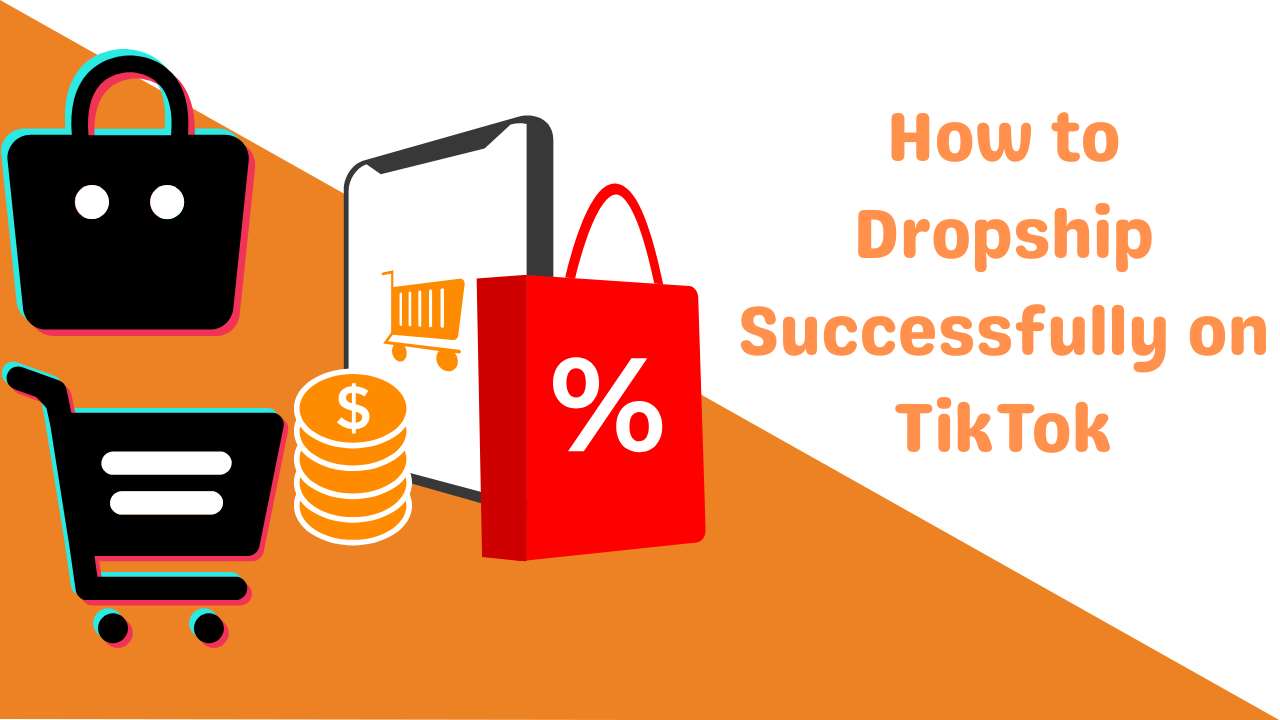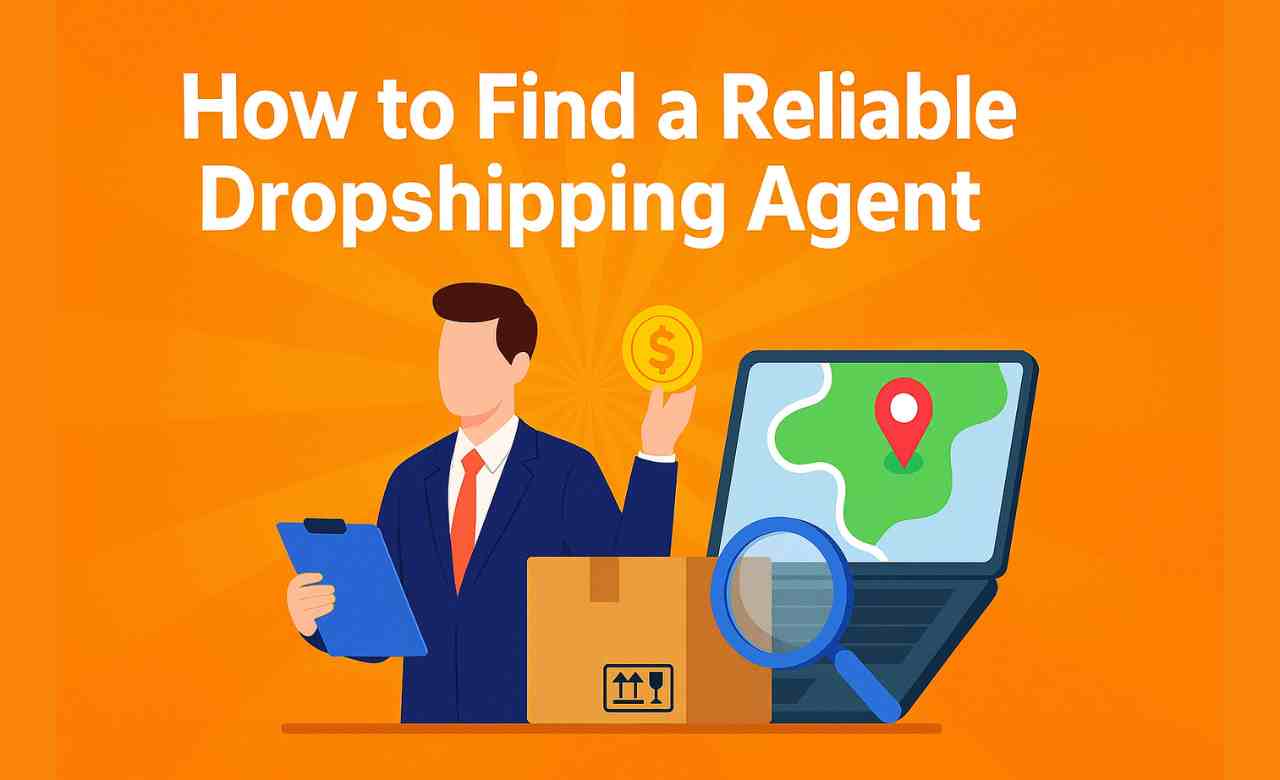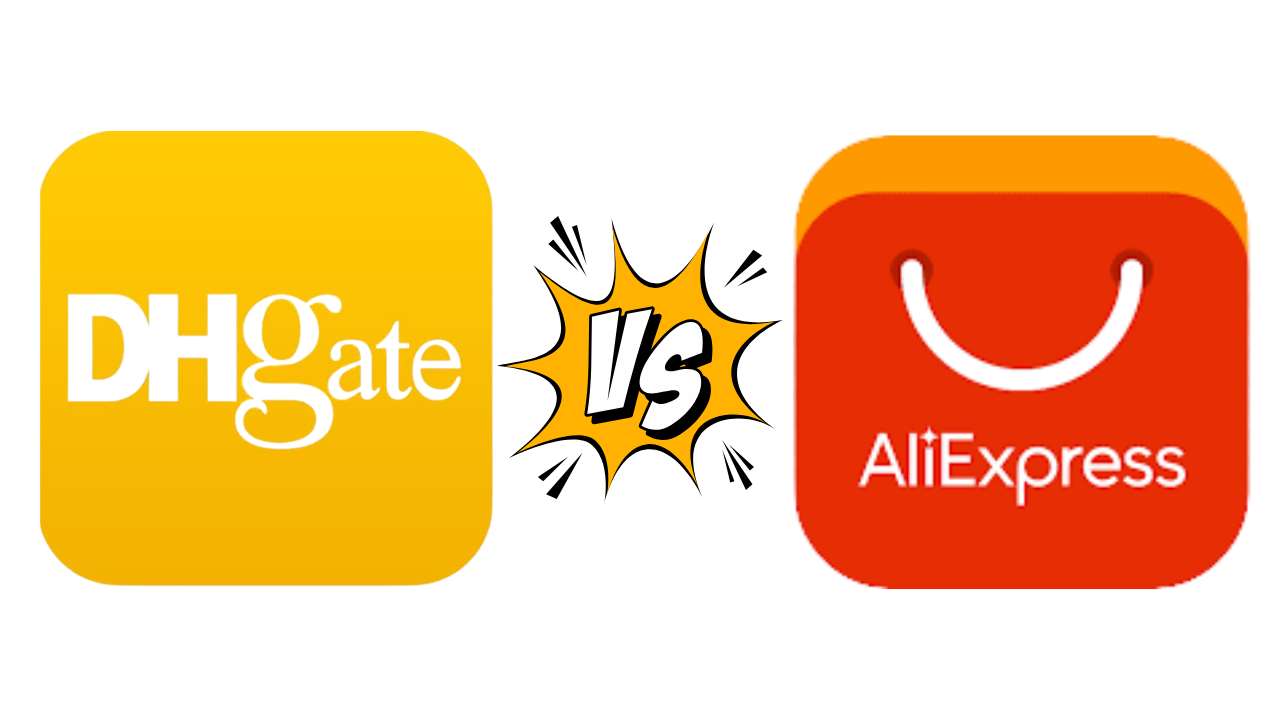In today’s highly competitive e-commerce landscape, effective dropshipping ads play a crucial role in boosting traffic and sales for online businesses. This article, “Effective Dropshipping Ads to Increase Traffic & Sales,” explores a comprehensive strategy for leveraging advertising to maximize your dropshipping success. By focusing on the types of ads, budget management, and performance analytics, this guide aims to provide actionable insights that can enhance your marketing approach, increase visibility, and drive conversions.
1. What Are Dropshipping Ads and Why Are They Important?
Dropshipping ads are a specialized form of advertising aimed at promoting products offered by dropshipping retailers. Unlike traditional retail, where physical inventory is maintained, dropshipping relies on third-party suppliers to fulfill customer orders. As a result, advertising becomes a critical component for driving traffic and facilitating sales.
But here’s the kicker: without effective advertising, a dropshipping business may struggle to attract customers and compete in the crowded online marketplace. The primary goal of dropshipping ads is to engage potential buyers and compel them to visit the retailer’s website to explore products.
To gain traction, your ads must not just exist; they need to resonate with targeted audiences. This means understanding your customer personas and tailoring your messages accordingly. For example, a study by Statista indicates that 79% of consumers prefer ads that speak directly to their interests. Thus, employing targeted ads can significantly enhance engagement rates.
Furthermore, dropshipping ads can appear in various formats, including social media ads, search engine ads, and display ads on relevant websites. Choosing the right platforms for your ads can help you reach your target demographic more effectively.
| Type of Dropshipping Ad | Purpose | Example Platforms |
|---|---|---|
| Social Media Ads | Engage users directly through social platforms | Facebook, Instagram |
| Search Engine Ads | Capture potential customers actively searching | Google Ads, Bing Ads |
| Display Ads | Increase brand visibility across various sites | Google Display Network, AdRoll |
2. How Can Dropshipping Ads Boost Traffic?
Dropshipping ads can significantly amplify website traffic when executed with a strategic approach. So, how can these ads effectively drive visitors to your online store?
What’s the real story? The key to increasing traffic lies in targeted advertisements. By focusing on demographics, interests, and online behaviors, you can ensure that your ads reach those most likely to convert. Utilizing tools like Facebook Ads Manager allows you to hone in on specific audiences, thereby optimizing your ad spend.
Another effective method is leveraging content marketing alongside your ads. Create blogs, videos, or infographics that provide value to potential customers while leading them to your products. For instance, if you’re selling fitness equipment, consider writing a blog post on the best workout routines complemented by your gear. This strategy positions your brand as an authority while naturally guiding visitors to your site.
Moreover, utilizing retargeting ads can help enhance traffic levels. These ads reach users who have previously interacted with your site but did not complete a purchase. A 2019 study by Econsultancy reported that retargeting ads can increase conversion rates by up to 150%. Thus, bringing back potential customers through targeted ads can significantly boost overall traffic.
| Ad Strategy | Description | Expected Outcome |
|---|---|---|
| Audience Targeting | Use insights to reach specific demographics | Improved relevance and engagement |
| Content Marketing | Create valuable content to draw visitors | Increased website traffic |
| Retargeting Ads | Advertise to users who have previously visited | Higher conversion rates |
3. What Types of Ads Work Best for Dropshipping?
Understanding the various types of ads that work best for dropshipping is essential for crafting an effective marketing strategy. So, what types should you consider?
Ready for the good part? The type of ad you choose depends largely on your products and target audience. Here are some popular options to consider:
- Social Media Ads: These ads are particularly effective for visually appealing products. Platforms like Instagram and Facebook allow for dynamic ads that engage users through eye-catching images and promotions.
- Pay-Per-Click (PPC) Ads: With platforms like Google Ads, businesses can reach customers searching for specific keywords related to their products. By using well-researched keywords, you can effectively increase your visibility in search results and drive traffic.
- Video Ads: Incorporating video content can significantly increase engagement. YouTube ads or social media posts featuring product demos or testimonials can capture consumer attention and provide a deeper connection to your brand.
- Influencer Marketing: Collaborating with social media influencers can extend your reach. By leveraging influencers’ established audiences, you can organically promote your products and enhance credibility.
- Email Marketing Ads: Targeted email campaigns can effectively re-engage previous customers and encourage new purchases. Personalized content can significantly improve open and conversion rates.
| Ad Type | Best Used For | Benefits |
|---|---|---|
| Social Media Ads | Visual products and promotions | High engagement potential |
| PPC Ads | Search-driven traffic | Targeting specific keywords |
| Video Ads | Showing product demonstrations | Enhanced customer connection |
| Influencer Marketing | Expanding reach through social networks | Authentic brand promotion |
| Email Marketing | Re-engaging past customers | Cost-effective outreach |
4. How to Create Compelling Dropshipping Ad Copy?
The effectiveness of your advertising largely depends on the ad copy used to communicate with potential customers. So, how can you craft compelling ad copy for your dropshipping products?
What’s the real story? The first step is understanding what resonates with your audience. Research the language and value propositions that appeal to your target market. Use customer personas to guide your decisions and ensure consistency in tone and style across ads.
Additionally, the structure of your ad copy plays a significant role. Start with a catchy headline that grabs attention. Subsequently, use engaging body text that highlights key benefits of your product, addressing potential pain points. For example, instead of merely stating “Buy our fitness tracker,” try “Get the fitness tracker that keeps you motivated and on track, anytime, anywhere.”
Calls to action (CTAs) are another critical component. Phrases like “Shop Now” or “Limited Time Offer” create a sense of urgency and motivate potential customers to act immediately. Testing various CTAs could help determine what works best for your audience.
Finally, employing visuals alongside your copy can significantly enhance the message. High-quality images of your products being used or enjoyed can capture attention and convey lifestyle aspirations.
| Copywriting Element | Purpose | Tips |
|---|---|---|
| Catchy Headline | Grab attention | Use strong keywords |
| Engaging Body Text | Highlight product benefits | Address customer pain points |
| Effective Call to Action (CTA) | Encourage immediate action | Create urgency in messaging |
| Supporting Visuals | Enhance appeal | Use high-quality images or graphics |
5. Where Should You Run Your Dropshipping Ads?
Choosing the right platforms to run your dropshipping ads is crucial for maximizing visibility and engagement. So, where should you consider placing your ads?
But here’s the kicker: your platform selection should align with where your target audience spends their time.
- Social Media Platforms: Facebook, Instagram, and Pinterest are conducive to visually-driven products. They allow for targeted advertising to specific demographics based on interests, behaviors, and interactions.
- Search Engines: Google Ads is an excellent choice for capturing traffic from users actively searching for relevant products. Align keywords with your target audience’s interests to improve search performance.
- E-Commerce Marketplaces: For those just starting, platforms like Amazon or eBay may be appealing for advertising. These marketplaces come with built-in audiences and numerous opportunities but usually take a higher commission compared to your own store.
- Affiliate and Influencer Networks: Partnering with influencer marketing platforms can provide access to a broader audience while improving brand credibility.
- Email and Content Platforms: Don’t overlook running ads through newsletters or content marketing platforms that engage users. They can serve as a complement to your ad efforts to draw in potential customers.
| Advertising Platform | Characteristics | Best For |
|---|---|---|
| Social Media | Visual, demographic targeting | Engaging specific audiences |
| Search Engines | Keyword-driven, intent-based advertising | Capturing active search queries |
| E-Commerce Marketplaces | Established customer base | Quick access to large audiences |
| Affiliate Networks | Collaborating with influencers | Exponential reach through shared trust |
| Email and Content Marketing | Direct engagement with targeted audiences | Personalized product promotions |
6. How to Set a Budget for Your Dropshipping Ads?
Budgeting for your dropshipping ads is a crucial step in ensuring profitability. So, how do you determine a practical and effective advertising budget?
What’s the real story? Start by evaluating your overall marketing budget. This percentage can often vary depending on your business stage, industry norms, and specific goals. A common guideline is to allocate around 5-10% of your overall revenue or projected revenue towards advertising.
Following this, examine the costs associated with different ad types. Social media ads can range from a few dollars a day to a higher budget for larger campaigns. It’s essential to evaluate the cost-per-click (CPC) or cost-per-impression (CPM) rates associated with your chosen platform. For example, a recent report by WordStream indicated that the average CPC for the Google Ads is approximately $1-2 for Google Search, while social media platforms can vary based on engagement.
Additionally, monitoring ad performance allows you to adjust your budget as needed. If a particular ad is performing well, consider reallocating funds from lower-performing campaigns to maximize return on investment (ROI).
Lastly, consider seasonality; marketing spends may increase during holiday seasons or major sales events. By planning ahead, you can position your dropshipping store to thrive during peak times.
| Budgeting Elements | Description | Considerations |
|---|---|---|
| Overall Marketing Budget | Set a percentage of revenue for ads | Typically, 5-10% of revenue |
| Cost Analysis | Evaluate costs of different ad types | CPC or CPM rates vary by platform |
| Performance Monitoring | Adjust spending based on ad performance | Reallocate funds to successful ads |
7. What Are the Best Practices for Dropshipping Ad Campaigns?
Implementing best practices for your dropshipping ad campaigns is crucial for ensuring effectiveness and return on investment. So, what are some best practices to consider?
Ready for the good part? First, focusing on A/B testing can help you identify which ads perform better with your audience. By testing variations in copy, images, targeting parameters, and CTA phrases, you can gather data that indicates what resonates most with potential customers.
Another key practice is maintaining ad relevance. Google and social media algorithms prioritize ads that are relevant to users’ interests, which enhances visibility. Ensure your ad copy aligns with the products being advertised and incorporates keywords that your target audience is searching for.
Monitoring and analyzing key metrics are also crucial. Regularly assessing click-through rates (CTR), conversion rates, and return on ad spend (ROAS) will help fine-tune your advertising strategy. According to a report by AdRoll, retailers can optimize their ad spending by using analytics to identify the best-performing ads and focusing their efforts on those.
Lastly, establishing clear objectives for each ad campaign ensures that you stay focused. Whether your goal is brand awareness or driving conversions, having set objectives guides your campaign strategy.
| Best Practices | Key Focus Areas | Expected Results |
|---|---|---|
| A/B Testing | Experiment with different ad variations | Identify high-performing ads |
| Ad Relevance | Ensure alignment between copy and visuals | Improved visibility and engagement |
| Metrics Monitoring | Assess performance based on key indicators | Optimize advertising strategy |
| Clear Objectives | Set specific goals for each campaign | Maintain focus and measure success |
8. How to Adjust Your Ads Based on Performance?
Monitoring ad performance is essential for maximizing effectiveness. So, how can you effectively adjust your ads based on performance metrics?
What’s the real story? Start by regularly reviewing ad performance data. Key performance indicators such as CTR, conversion rate, and engagement metrics provide insights into how well your ads are performing.
If an ad is underperforming, consider pausing it and analyzing its elements for improvement. By doing so, you can understand whether the issue lies within the targeting, copy, or design. For instance, if your CTR is low, it may indicate that your ad isn’t engaging enough to encourage clicks.
On the other hand, if you find that certain ads are performing exceptionally well, consider increasing your budget. Allocating more resources to successful campaigns can lead to a greater ROI.
Additionally, audience insights can inform future campaigns. For example, if certain demographics are responding well, you may want to create ads that cater specifically to that audience or create lookalike audiences based on the existing customer base.
| Performance Metrics | Importance | Action Steps |
|---|---|---|
| Click-Through Rate (CTR) | Indicates ad engagement level | Improve visuals or ad copy if low |
| Conversion Rate | Indicates percentage of visitors who buy | Reassess landing pages for effectiveness |
| Audience Insights | Provides data on who is responding to ads | Tailor future ads to high-performing segments |
9. What Role Does Retargeting Play in Dropshipping Ads?
Retargeting is a powerful strategy in advertising that focuses on users who have already interacted with your brand. So, what role does retargeting play in your dropshipping ad campaigns?
But here’s the kicker: retargeting allows you to re-engage potential customers who may have shown interest but did not complete a purchase. According to AdRoll, retargeting ads can drive brand recall by over 70%. This striking statistic emphasizes the importance of bringing back interested visitors for conversion.
The retargeting process works by placing tracking pixels on your website. When users visit your site but leave without making a purchase, those pixels enable you to display ads on other platforms as they browse. This continued exposure reinforces their interest in your products.
Additionally, personalized content enhances the retargeting experience. For example, if a user browsed a specific product, showing targeted ads for that product or similar items can improve the chances of a return visit. By reminding them of what they were interested in, you guide customer behavior more effectively.
Overall, integrating retargeting ads into your overall strategy can significantly boost conversion rates, enhance brand recall, and ultimately lead to increased sales.
| Retargeting Strategy | Benefits | Implementation Steps |
|---|---|---|
| Pixel Tracking | Identifies site visitors | Install tracking pixels via platforms |
| Personalized Ads | Show ads based on user behavior | Use dynamic ads for better targeting |
| Brand Recall | Reinforces product awareness | Maintain consistent messaging |
10. How to Utilize Social Proof in Your Ads?
Social proof is a psychological phenomenon where people rely on the actions and feedback of others to make decisions. So, how can you effectively utilize social proof in your dropshipping ads?
What’s the real story? Social proof can enhance trust and credibility in your advertising. Based on a survey by BrightLocal, 79% of consumers trust online reviews as much as personal recommendations. This powerful influence can be leveraged in your ad campaigns by showcasing customer reviews and testimonials.
Incorporating user-generated content (UGC) into your advertising strategy can also showcase social proof. Sharing photos, videos, or testimonials from satisfied customers demonstrates trust in your brand and products. Platforms like Instagram can be particularly effective for showcasing UGC, allowing potential customers to envision how your products fit into their lives.
Another vital aspect is displaying trust badges or partnership endorsements in your ads. Showing affiliations with reputable brands, certifications, or featured publications can enhance credibility, encouraging new customers to move forward.
Finally, presenting statistics and data that highlight customer satisfaction can also serve as effective social proof. For example, stating that “95% of our customers recommend our product” can encourage more prospects to purchase.
| Social Proof Elements | Purpose | Expected Outcome |
|---|---|---|
| Customer Reviews | Build trust through testimonials | Increased credibility and conversions |
| User-Generated Content (UGC) | Showcase real-life usage by customers | Enhanced brand loyalty and engagement |
| Trust Badges | Provide evidence of credibility | Boosted trust from new customers |
11. What Trends Should You Watch for in Dropshipping Ads?
Staying informed about emerging trends in dropshipping ads is essential for maintaining a competitive edge. So, what trends should you keep an eye on?
Ready for the good part? One major trend to watch is the integration of artificial intelligence (AI) in advertising. AI tools can analyze large datasets to create highly-targeted ad campaigns, enhancing personalization and effectiveness. Additionally, AI-driven chatbots have become instrumental in providing customer service, improving engagement through immediate support.
Another noteworthy trend is the rise of video advertising. As consumers increasingly prefer video content, investing in platforms such as TikTok and YouTube can create a captivating experience. Videos allow dropshipping businesses to showcase products dynamically, engage customers, and tell brand stories.
Moreover, the focus on sustainability is gaining momentum. As consumers become more environmentally conscious, brands that emphasize eco-friendly practices in their ads will attract a growing audience. This trend can provide an opportunity for dropshipping businesses to market sustainable products effectively.
Finally, keep an eye on the growing importance of privacy regulations. With an increasing number of users concerned about data privacy, implementing transparent ad practices will be essential. Complying with regulations like GDPR can enhance trust and customer loyalty.
| Current Trends | Description | Implications |
|---|---|---|
| AI Integration | Utilizing AI for targeted campaigns | Improved personalization and effectiveness |
| Video Advertising | Increasing use of video content | Greater engagement and storytelling |
| Sustainability Focus | Emphasis on eco-friendly practices | Marketing of sustainable products |
| Privacy Regulations | Growing importance of data privacy | Need for transparency in advertising |
FAQ Section
- Q1: What are dropshipping ads?
Dropshipping ads are online advertisements tailored to promote products sold by dropshipping retailers, aimed at driving traffic and facilitating sales. - Q2: How do dropshipping ads work?
Dropshipping ads work by targeting specific audiences with engaging messages to encourage potential customers to visit online stores and make purchases. - Q3: Why are dropshipping ads important for e-commerce?
Dropshipping ads are vital for increasing visibility, attracting customers, and driving conversions, significantly influencing the success of e-commerce businesses. - Q4: What types of ads should I use for my dropshipping business?
Commonly used ads for dropshipping include social media ads, PPC ads, video ads, influencer marketing, and email marketing campaigns. - Q5: How can I measure the effectiveness of my dropshipping ads?
The effectiveness of dropshipping ads can be evaluated through key performance indicators such as click-through rates (CTR), conversion rates, and return on ad spend (ROAS).







